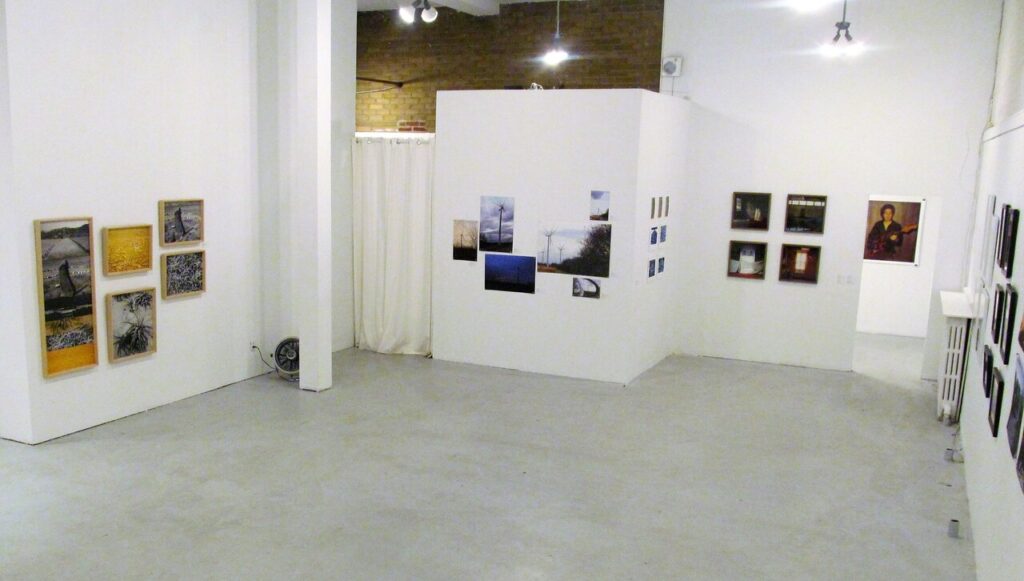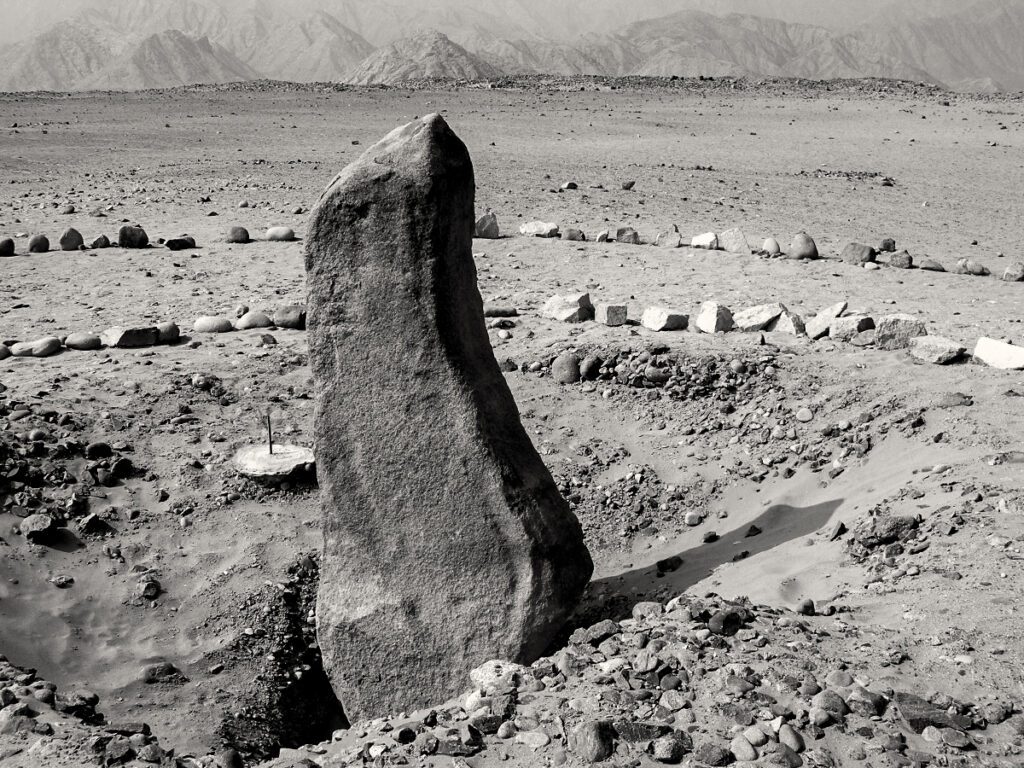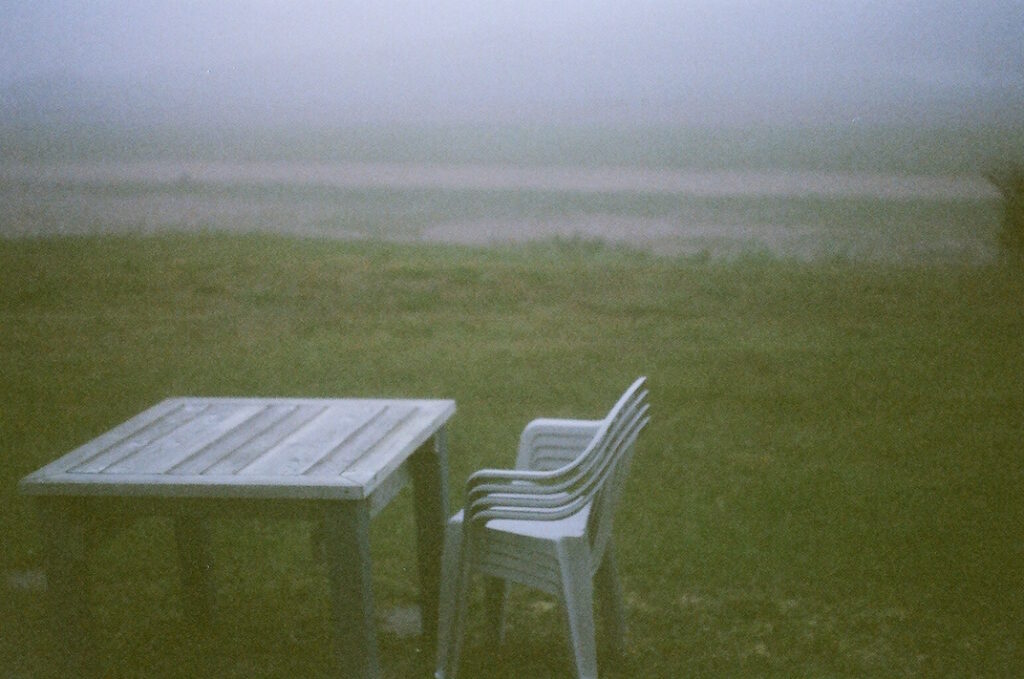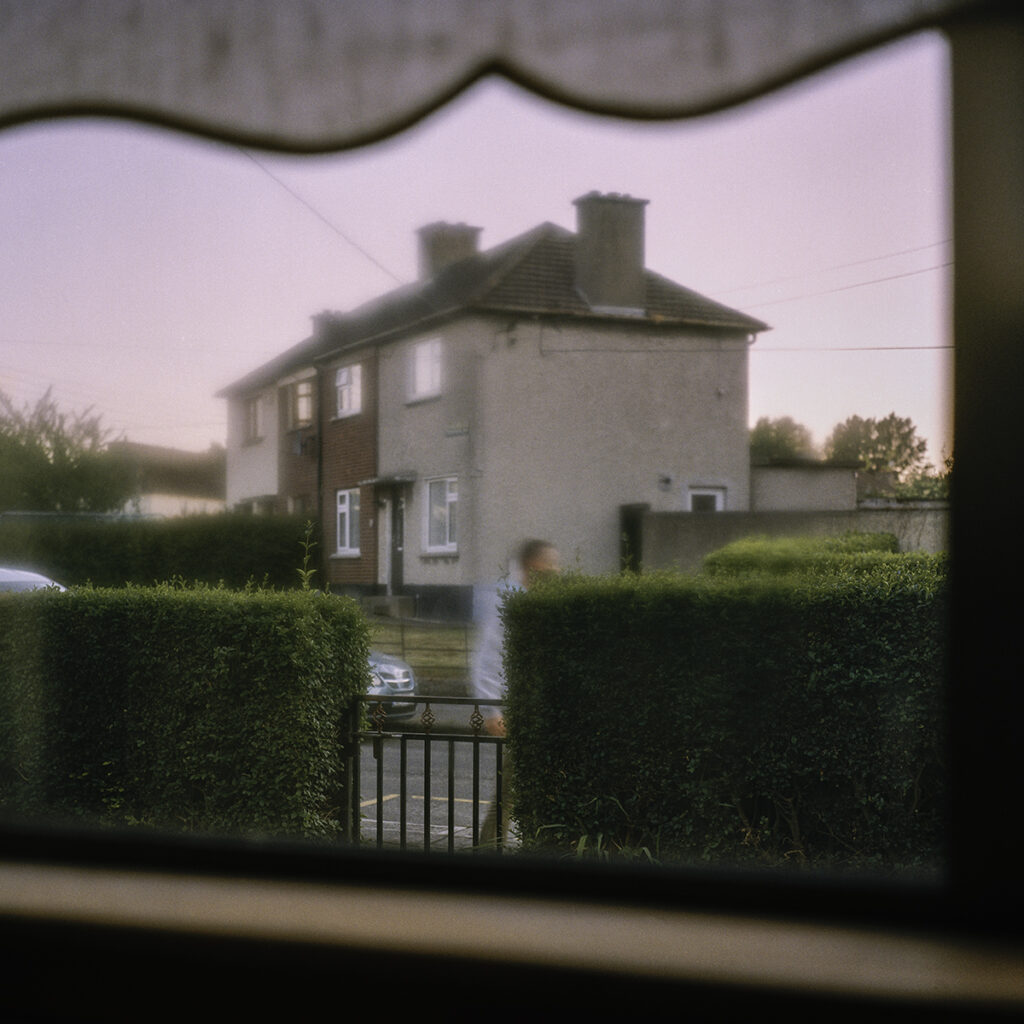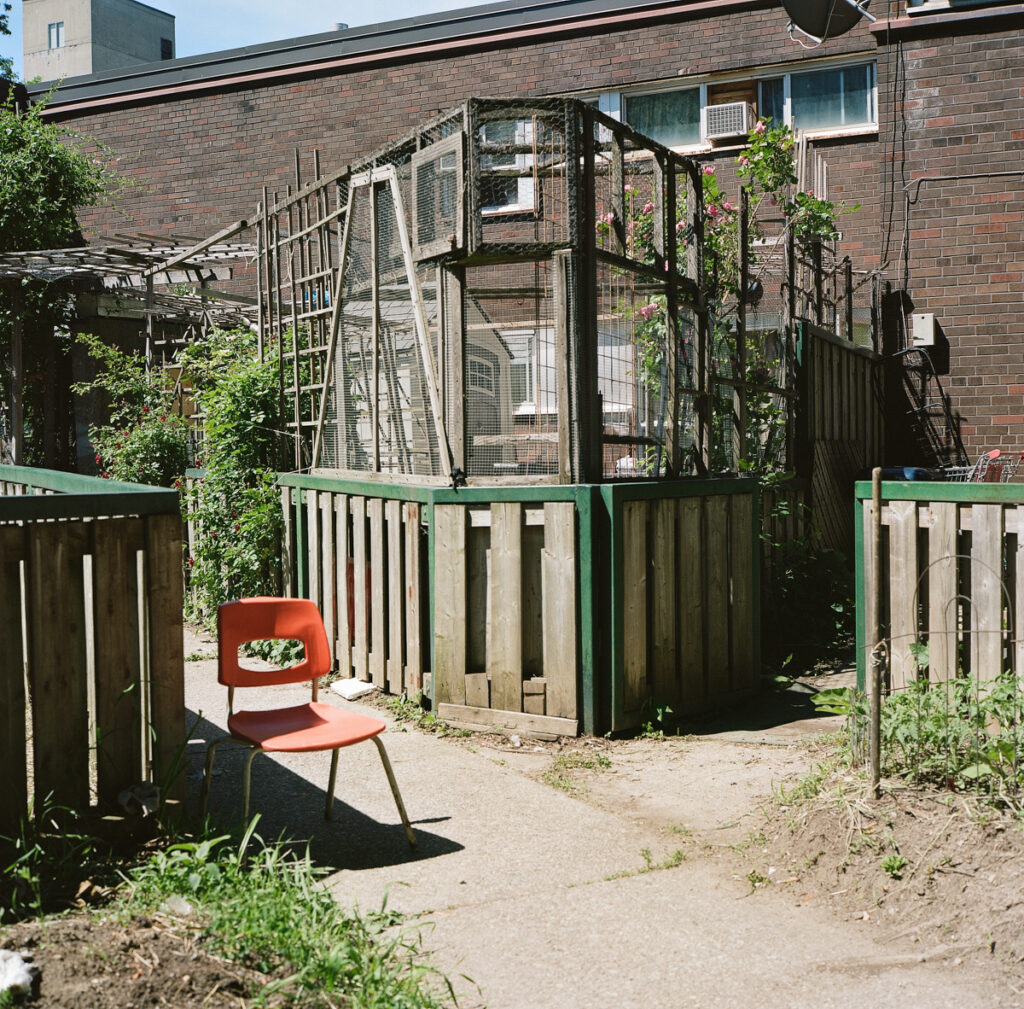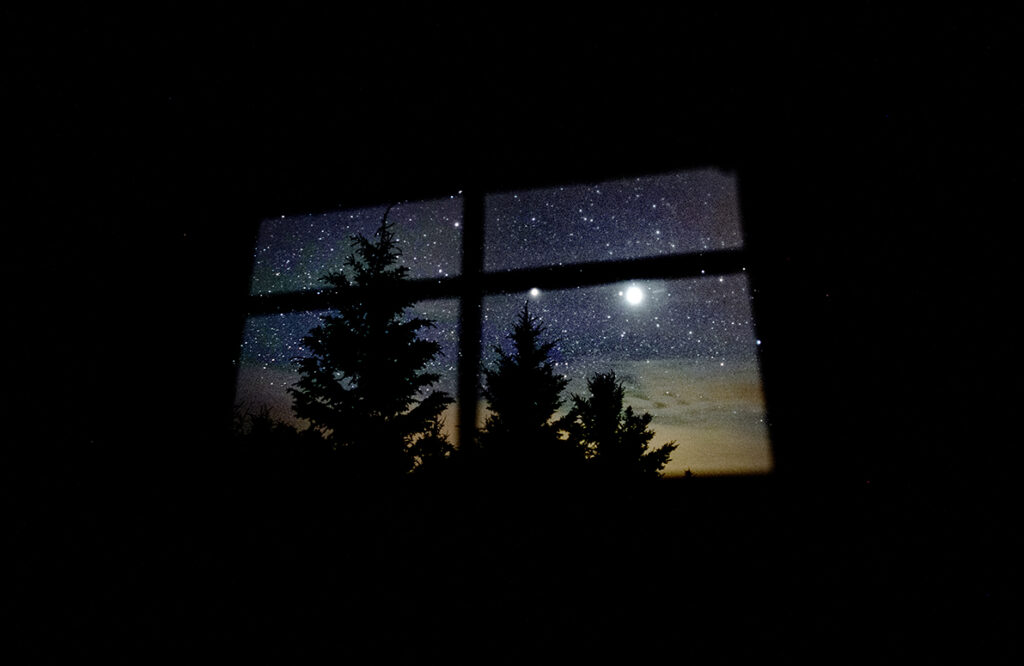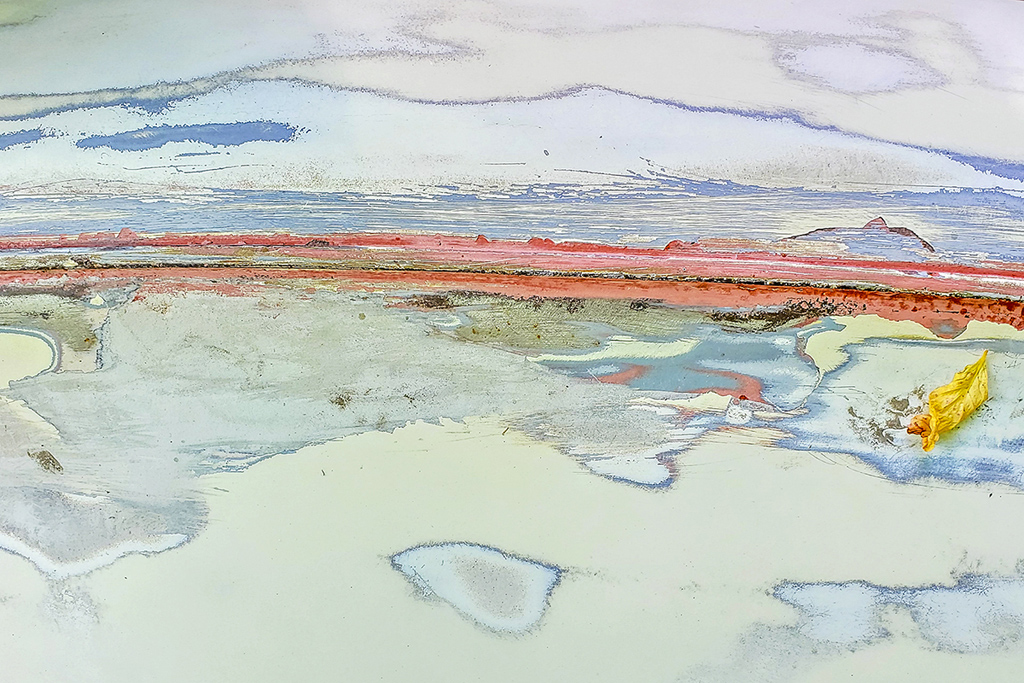Alongside Scotiabank CONTACT 2021 Photography Festival, members of Gallery 44 Centre for Contemporary Photography present two upcoming group shows featuring distinct artists whose work encourages a stretching of perception and empathy. Showing first on September 15–26 at Gallery 1313, Spectra 2 challenges conceptions of the urban sphere, revealing patterns and connection in a myriad of environments. The next show, Spectra 1, takes place on October 13–31 at Artscape Youngplace and leaves the gates of subject matter open, yet the artworks align to reveal a deep and shared compassion.
Installation view of Spectra 2 at Gallery 1313. Photo: Phil Anderson
Postponed from 2020, Spectra 2 (Visible or Invisible Cities) represents an open yet intentional motif relating to our current reality. Curator Jessica Thalmann drew inspiration from Italo Calvino’s Invisible Cities (1972), an anti-novel offering expansive renditions of metropolis based in ideas such as memory and desire. For Calvino, cities can be infinite, intertwining, conceptual, and secret. Such malleable city forms may be more pertinent to the contemporary atomized landscape than when the book was originally published, and Thalmann clearly sees this parallel. “I was interested in how the works in the show meditate on the ways we see, embody, and remember the places around us, often making visible what cannot literally be seen in the urban and natural landscape,” she explains. While human presence is not the central focus of this collection, there appears a familiar soothing resonance. The exposure and framing of Lilianne Schneider’s Caral Invisible (2020) series resembles the settings of Judy Dater’s entrancing selfportraits from the early 80s. In some of Scheider’s pictures, an anthropomorphic quality presents itself in the earth.
Lilianne Schneider, Caral Invisible, 2020
Grace Wang’ photos are also striking, ranging from faraway, emotive, and candid portraits to strangely angled shots of remote landscapes. The subject in Mary (2020), slyly crouched in a body of water, looks directly into the audience’s eyes, suggesting the interconnectedness between the psychic and the physical as well as the possibility of full integration between human and habitat. Wang’s least content-rich photo, Daydreamers (2020), does not require human subjects to capture the emotionality of recollecting presence. Its humble and obscure presentation functions like an impressionist painting.
Grace Wang, Daydreamers, 2020
Spectra 1 is a thematically free yet connectively thought-provoking collection of images. Together these photos speak from a place of slow change. Unintentionally, almost every artist in this group portrays aspects of unlearning and learning to adapt—to finding solace and voice in the many confusingly contradictory and randomized scenarios of today. The photos reveal a new appreciation of sanctuary and a new understanding of the public sphere. In this exhibition, pieces of introspection look interestedly toward a matured uncertainty.
Two notable artists in this group investigate tensions between time and place. Shaney Herrmann’s Sale Agreed (2018) details a significant moment of loss and exploration that took place before the pandemic, yet speaks volumes to this shared historical moment and its consequences. Sale Agreed is an intimate study of a home in transition. Herrmann describes planning to visit her grandmother in Dublin who passed away shortly before her arrival. The project takes place in the days Herrmann spent alone in her grandmother’s home before it was sold. Awash in sentimentality and memory, the collection feels like a cross between a grounded familial visit and a dream—uncanny in nature, yet highly personal and belonging to only you. A warmth hovers over the space as pastel pinks dress the home and yard in flowers and light. Pieces of hair, sheets on the line, and private views give access to a relatable day-to-day pace, yet remain oddly mysterious in their sacred detachment. Herrmann is extremely generous and sincere to share such a delicate point of view.
Shaney Herrmann, Nana’s, 2018
Almost similar in the appreciation of a meaningful and changing space, David Scriven’s art looks toward the personalized public domain in Alexandra Park (2020). Silver tinsel sits unassuming on a metal fence and coral morning glory flowers pour from low windows, seeming to represent the ability to call upon agency and nesting in an unpredictable world. For the past year, Scriven captured a park sentenced to demolition, making way for a new housing development. Clearly, a special public domesticity will be lost in this action but forever preserved in Scriven’s work. The series points to the process of adorning and all its simple yet significant joys—doing the best with what one has. The solitude of these photos is poignant, yet celebratory of all things. With this perspective, even a fire hydrant in construction deserves the perfectly placed spotlight of the sun.
David Scriven, Alexandra Park 2, 2020
Another two significant artists centre around relationships between humanity and environment: from the sublime to the minute. Fred Lum’s series, ranging from 2016 to 2020, makes the night sky feel as close as bed blankets. The clarity of these skyscapes gives a glimpse of the natural abundance hiding behind airborne pollution. A complex relationship and clear attachment exist between humanity and the ethereal infinite. Developing a narrative between windows and the universe, frames become highly significant and provide not only perspective but required distance from the utterly unknowable. Lum’s photos hint toward a certain accessibility through distillation.
Fred Lum, Looking for comet NEOWISE, 2020
Perhaps missed at first blush, Courtney Fairweather’s work also elevates fundamental aspects of nature. Her series calls upon a pertinent Italian avant-garde art group of the ‘60s and ‘70s called Arte Povera. The movement rejected capitalism, bourgeois values, and intellectual control over experience in favour of the inherent anarchical power of imagination. The artists sought to pare down art objects to elemental and organic states, and Fairweather cleverly continues this practice today. This series displays a sense of limitless possibility within arm’s reach. Such a lens maximizes the experience of beauty with nominal interruption and extraction. The sensitivity, attention, and skill required to make fingernail clippings look artful comes from a type of minimalistic point of view that could collectively impact Earth for the better.
Courtney Fairweather, Horizons
Cayden Johnson
Images are courtesy of Spectra
*Exhibition information: Spectra 2 – Visible and Invisible Cities, September 15 – 26, 2021, Gallery 1313, 1313 Queen Street West, Toronto. Gallery hours: Wed – Sun 1 – 6 pm; Spectra 1, October 13 – 31, 2021, Artscape Youngplace, Hallways Galleries, 180 Shaw Street, Toronto. Gallery hours: Mon – Sun 8 am – 9 pm. Both exhibitions are part of Scotiabank CONTACT Photography Festival, 2021.

